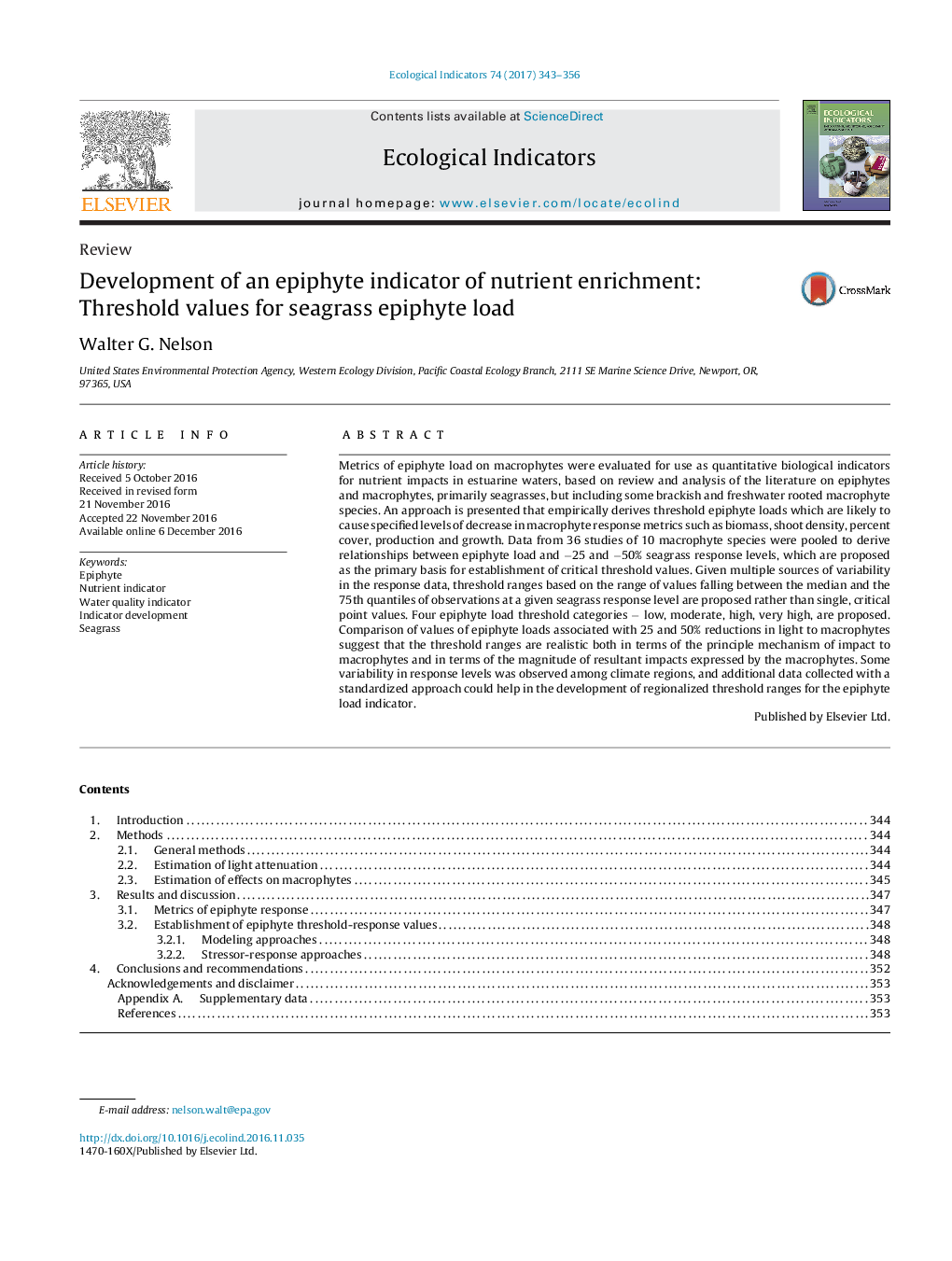| Article ID | Journal | Published Year | Pages | File Type |
|---|---|---|---|---|
| 5741861 | Ecological Indicators | 2017 | 14 Pages |
â¢Quantitative threshold ranges for an epiphyte load indicator of coastal nutrient enrichment are derived from statistical distributions of submerged aquatic vegetation (SAV) responses.â¢The threshold epiphyte loads are associated with â25 and â50% levels of decrease in SAV response metrics such as biomass, shoot density, percent cover, production and growth.â¢Given multiple sources of variability in the seagrass response data, threshold ranges corresponding to low, moderate, high, and very high levels of epiphytes are proposed rather than single, critical point values.
Metrics of epiphyte load on macrophytes were evaluated for use as quantitative biological indicators for nutrient impacts in estuarine waters, based on review and analysis of the literature on epiphytes and macrophytes, primarily seagrasses, but including some brackish and freshwater rooted macrophyte species. An approach is presented that empirically derives threshold epiphyte loads which are likely to cause specified levels of decrease in macrophyte response metrics such as biomass, shoot density, percent cover, production and growth. Data from 36 studies of 10 macrophyte species were pooled to derive relationships between epiphyte load and â25 and â50% seagrass response levels, which are proposed as the primary basis for establishment of critical threshold values. Given multiple sources of variability in the response data, threshold ranges based on the range of values falling between the median and the 75th quantiles of observations at a given seagrass response level are proposed rather than single, critical point values. Four epiphyte load threshold categories â low, moderate, high, very high, are proposed. Comparison of values of epiphyte loads associated with 25 and 50% reductions in light to macrophytes suggest that the threshold ranges are realistic both in terms of the principle mechanism of impact to macrophytes and in terms of the magnitude of resultant impacts expressed by the macrophytes. Some variability in response levels was observed among climate regions, and additional data collected with a standardized approach could help in the development of regionalized threshold ranges for the epiphyte load indicator.
Graphical abstractDownload high-res image (224KB)Download full-size image
